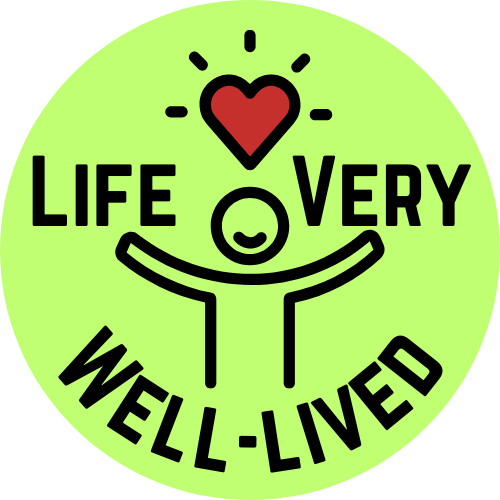In “Exploring Different Paths to Wellness,” our article delves into the realm of health and fitness, providing valuable insights on various approaches to achieve overall well-being. As we explore the different paths individuals can embark upon, we aim to shed light on the multifaceted nature of wellness, recognizing that it extends beyond physical fitness alone. Whether it be through holistic techniques, mindful practices, or advancements in technology, we present a comprehensive overview of the diverse avenues available to cultivate a healthy and balanced lifestyle. Join us as we navigate this exhilarating journey towards optimal wellness.

Physical Wellness
Physical wellness is an essential aspect of overall well-being. It involves taking care of our bodies through regular exercise, proper nutrition, and adequate sleep.
Exercise
Engaging in regular physical activity is crucial for maintaining physical wellness. Exercise not only helps us stay in shape but also promotes better cardiovascular health, strengthens our muscles and bones, and releases endorphins, which can boost our mood. Whether it’s going for a jog, attending a fitness class, or participating in team sports, finding a form of exercise that we enjoy and can incorporate into our daily routine is key.
Nutrition
Nutrition plays a vital role in physical wellness. Consuming a balanced diet that includes a variety of fruits, vegetables, lean proteins, whole grains, and healthy fats is essential for maintaining energy levels, supporting our immune system, and preventing chronic diseases. It is important to pay attention to portion sizes and limit the intake of processed foods, sugary drinks, and unhealthy fats. Consulting with a registered dietitian can be beneficial in creating a personalized nutrition plan.
Sleep
Quality sleep is crucial for physical wellness. Getting enough restorative sleep allows our bodies to heal, recharge, and function optimally. Establishing a regular sleep schedule, creating a relaxing bedtime routine, and ensuring our sleeping environment is comfortable and free from distractions are key strategies for promoting better sleep. Aim for at least 7-9 hours of sleep per night to support physical wellness.
Mental Wellness
Mental wellness refers to the state of our emotional and psychological well-being. It involves nurturing our minds, managing stress, and practicing mindfulness and meditation.
Mindfulness
Practicing mindfulness involves focusing our attention on the present moment and accepting it without judgment. By cultivating awareness of our thoughts, feelings, and sensations, we can develop a greater sense of self-awareness and reduce stress and anxiety. Mindfulness techniques such as deep breathing, body scans, and mindful eating can be incorporated into our daily lives to promote mental wellness.
Meditation
Meditation is a powerful practice that can help enhance mental wellness. By sitting quietly and focusing our attention, we can achieve a state of calm and relaxation. Regular meditation practice has been shown to reduce stress, improve concentration, and promote emotional well-being. There are various forms of meditation, including mindfulness meditation, loving-kindness meditation, and transcendental meditation. Exploring different techniques can help us find the one that resonates with us.
Stress Management
Managing stress is essential for maintaining mental wellness. Chronic stress can have negative effects on our overall well-being, leading to anxiety, depression, and physical health issues. Engaging in stress-reducing activities such as exercise, practicing relaxation techniques, setting boundaries, and seeking social support can help us better cope with stress and improve our mental health.
Emotional Wellness
Emotional wellness involves understanding and accepting our emotions, cultivating self-growth, practicing gratitude, and prioritizing self-care.
Self-Growth
Self-growth is an ongoing process of personal development. It involves self-reflection, setting goals, and taking steps towards becoming the best version of ourselves. Engaging in activities that challenge us, learning new skills, and seeking opportunities for personal growth can contribute to emotional well-being.
Gratitude
Practicing gratitude involves recognizing and appreciating the positive aspects of our lives. By focusing on what we are grateful for, we can shift our mindset and enhance our emotional well-being. Keeping a gratitude journal, expressing gratitude to others, and engaging in acts of kindness can help cultivate a sense of gratitude in our daily lives.
Self-Care
Self-care refers to the practice of prioritizing our own physical, mental, and emotional needs. It involves engaging in activities that promote relaxation, self-reflection, and rejuvenation. Taking time for ourselves, setting boundaries, engaging in hobbies, and seeking support when needed are all important aspects of self-care. By prioritizing self-care, we can better manage stress, improve our emotional well-being, and prevent burnout.
Social Wellness
Social wellness involves cultivating healthy relationships, fostering meaningful connections, and practicing effective communication.
Connection
Building and maintaining strong relationships is essential for social wellness. It involves connecting with others on a deeper level, fostering mutual trust and understanding, and providing support and companionship. Engaging in social activities, participating in group hobbies or sports, and prioritizing quality time with loved ones can contribute to social well-being.
Communication
Effective communication is key to healthy relationships and social wellness. It involves actively listening, expressing ourselves assertively, and maintaining open and honest dialogue. Improving our communication skills can help prevent misunderstandings, resolve conflicts, and strengthen our connections with others.
Support
Seeking and providing support is crucial for social wellness. Building a supportive network of friends, family, and colleagues can help us navigate life’s challenges, share experiences, and celebrate successes together. Offering support to others, being a good listener, and practicing empathy can contribute to a strong support system and enhance social well-being.

Occupational Wellness
Occupational wellness involves finding a healthy balance between work and personal life, pursuing career development opportunities, and fostering positive professional relationships.
Work-Life Balance
Achieving a healthy work-life balance is essential for occupational wellness. It involves setting boundaries between work and personal life, prioritizing self-care, and allocating time and energy to various aspects of our lives. Finding strategies to manage stress, setting realistic goals, and practicing time management can help us maintain a harmonious balance between work and personal responsibilities.
Career Development
Continued professional growth and development contribute to occupational wellness. It involves seeking opportunities for learning, skill-building, and advancement within our chosen field. Engaging in professional development activities, attending industry conferences, and seeking mentorship can help us remain motivated, enhance our skills, and achieve career satisfaction.
Professional Relationships
Nurturing positive professional relationships is crucial for occupational wellness. Building strong connections with colleagues, supervisors, and mentors can foster a supportive work environment, promote collaboration, and enhance job satisfaction. Effective communication, respect, and networking can help cultivate positive professional relationships and contribute to occupational well-being.
Environmental Wellness
Environmental wellness involves being mindful of our impact on the environment, connecting with nature, and creating a personal environment that promotes well-being.
Sustainability
Promoting sustainability is integral to environmental wellness. It involves adopting eco-friendly practices, minimizing waste, conserving resources, and reducing our carbon footprint. Making conscious choices such as using reusable products, recycling, and conserving energy can contribute to a healthier and more sustainable environment.
Connection with Nature
Connecting with nature is beneficial for our overall well-being. Spending time outdoors, engaging in activities such as hiking or gardening, and appreciating the beauty of the natural world can promote relaxation, reduce stress, and enhance our mental and physical health. Taking breaks in nature, incorporating green spaces into our daily routine, and practicing mindfulness outdoors can contribute to environmental wellness.
Personal Environment
Creating a personal environment that promotes well-being is essential for environmental wellness. It involves organizing and decluttering our living spaces, creating a peaceful and functional home or work environment, and surrounding ourselves with items that bring us joy and inspiration. Taking steps to create a clean and organized personal environment can enhance our overall well-being and contribute to environmental wellness.
Intellectual Wellness
Intellectual wellness involves engaging in lifelong learning, practicing problem-solving skills, and nurturing creativity.
Continued Learning
Continued learning is crucial for intellectual wellness. It involves seeking knowledge, expanding our horizons, and staying curious about various subjects. Engaging in activities such as reading, attending lectures, taking classes, and pursuing hobbies that challenge our minds can promote intellectual growth and enhance overall well-being.
Problem-Solving
Practicing problem-solving skills is valuable for intellectual wellness. It involves assessing and analyzing situations, identifying potential solutions, and making informed decisions. Developing critical thinking skills, seeking alternative perspectives, and embracing challenges can help us become more adept at problem-solving and enhance our intellectual well-being.
Creativity
Nurturing creativity is essential for intellectual wellness. Engaging in artistic activities such as painting, writing, or playing a musical instrument allows us to express ourselves, embrace our imagination, and foster innovation. Exploring different creative outlets and valuing the importance of creativity can enhance intellectual well-being and contribute to a fulfilling life.
Spiritual Wellness
Spiritual wellness involves finding meaning and purpose in life, practicing meditation or religious beliefs, and exploring personal beliefs.
Meditation
Meditation is not only beneficial for mental wellness but also for spiritual wellness. Engaging in meditation practices that focus on connecting with a higher power or an inner sense of self can help us cultivate a deeper spiritual connection. By quieting our minds and nurturing inner peace, we can enhance our spiritual well-being.
Religion
Religion plays a significant role in spiritual wellness for many individuals. It involves following a set of beliefs, engaging in religious practices, and participating in community activities. Embracing religious traditions, attending religious services, and finding solace and guidance through religious practices can contribute to spiritual well-being.
Personal Beliefs
Exploring and embracing personal beliefs is essential for spiritual wellness. It involves reflecting on our values, principles, and beliefs about the meaning and purpose of life. Engaging in self-reflection, seeking knowledge about different philosophical perspectives, and aligning our actions with our personal beliefs can promote spiritual growth and enhance overall well-being.
Financial Wellness
Financial wellness involves effectively managing our finances, practicing budgeting, saving, and considering investment opportunities.
Budgeting
Creating and sticking to a budget is crucial for financial wellness. It involves assessing our income and expenses, prioritizing financial goals, and making informed decisions about how we spend and save money. Developing healthy spending habits, tracking expenses, and seeking guidance from financial experts can support financial well-being.
Savings
Building and maintaining savings is an essential aspect of financial wellness. Establishing an emergency fund, saving for specific goals such as retirement or a down payment on a home, and setting aside a portion of our income regularly can provide financial security and peace of mind. Automating savings, evaluating expenses, and exploring opportunities for passive income can contribute to financial well-being.
Investments
Considering investment opportunities can contribute to financial wellness. It involves assessing risk tolerance, diversifying investments, and seeking professional advice when needed. Exploring options such as stocks, bonds, real estate, or retirement accounts can help grow wealth over the long term and support financial well-being.
Cultural Wellness
Cultural wellness involves embracing diversity, promoting inclusion, and actively engaging in cultural activities.
Diversity
Valuing and celebrating diversity is crucial for cultural wellness. It involves recognizing and respecting different cultures, traditions, and perspectives. Engaging in intercultural dialogue, participating in cultural events, and challenging biases and stereotypes can contribute to cultural well-being and foster a sense of unity and understanding.
Inclusion
Promoting inclusion is essential for cultural wellness. It involves creating environments where individuals from all backgrounds feel welcomed, respected, and valued. Embracing diverse perspectives, promoting equality and fairness, and advocating for inclusive policies and practices can enhance cultural well-being.
Cultural Engagement
Actively participating in cultural activities is beneficial for cultural wellness. It involves exploring different art forms, attending performances, visiting museums, and engaging in cultural traditions and celebrations. Embracing cultural heritage, learning about different cultures, and supporting local cultural events can contribute to a sense of belonging and enhance cultural well-being.
Incorporating these different paths to wellness into our lives can lead to improved overall well-being. By prioritizing physical, mental, emotional, social, occupational, environmental, intellectual, spiritual, financial, and cultural wellness, we can create a holistic approach to well-being that fosters our growth, happiness, and fulfillment. Remember, wellness is a journey, and it is important to find what works best for us individually while being open to exploring new paths along the way.

